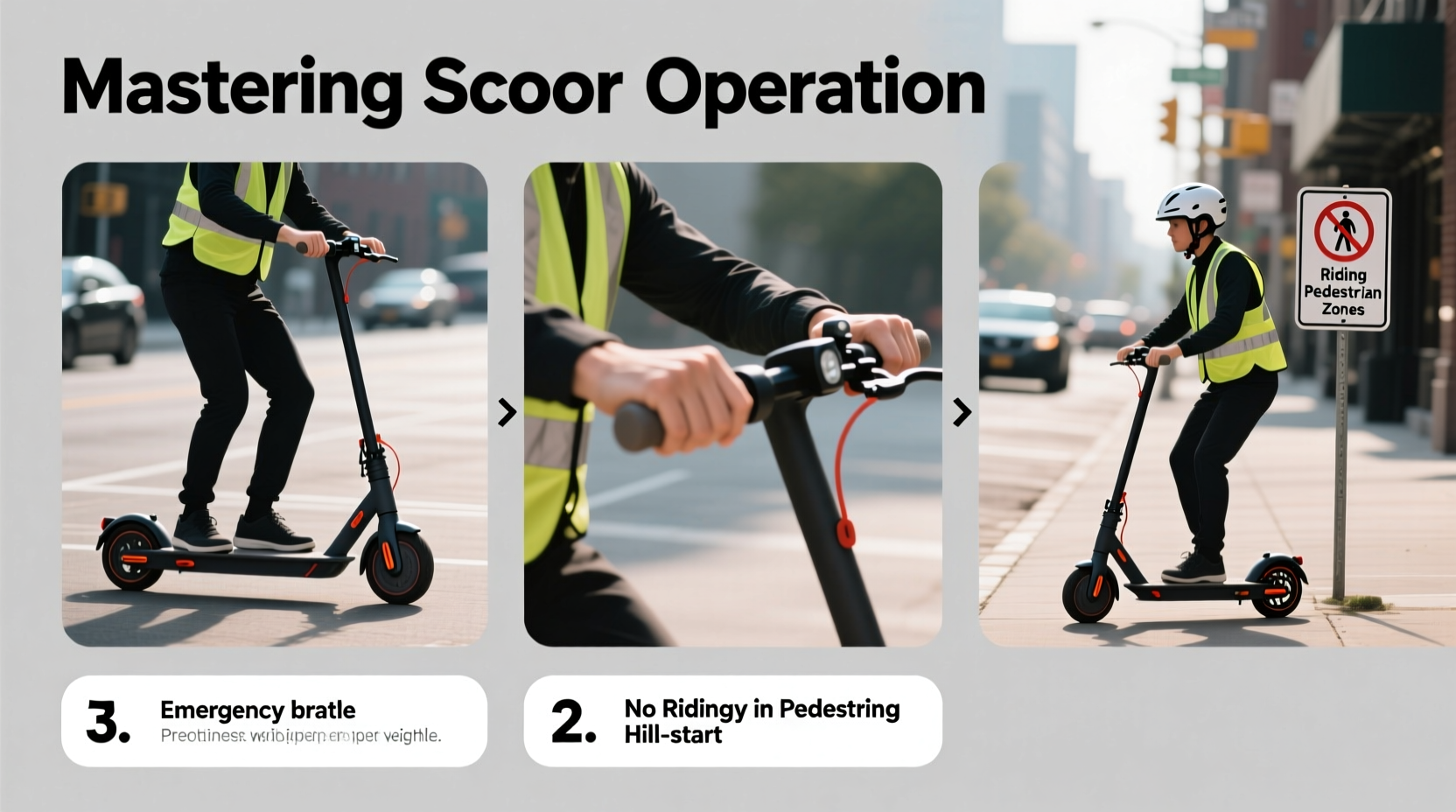Riding a scooter offers a blend of convenience, efficiency, and fun—whether you're navigating city streets or enjoying a leisurely ride through your neighborhood. However, confidence on two wheels doesn’t come overnight. It’s built through knowledge, practice, and a deep respect for safety. This guide breaks down the essentials of scooter operation into clear, actionable steps so you can ride with control, awareness, and assurance.
Understanding Your Scooter: Know the Basics

Before hitting the road, take time to familiarize yourself with your scooter’s components and how they function. Most modern scooters—electric or gas-powered—share common features:
- Handlebars: Control steering and house brake levers, throttle, horn, and lights.
- Brakes: Typically, front and rear brakes operated by hand levers. Some models feature regenerative braking (especially e-scooters).
- Throttle: Usually a twist-grip on the right handlebar that controls acceleration.
- Display Panel: Shows speed, battery level, mode settings, and error codes.
- Deck and Footrest: Where you stand; should offer grip and adequate space.
- Wheels and Suspension: Smaller wheels respond quickly but transmit more road vibration; suspension improves comfort.
Knowing how each part works allows you to react appropriately in dynamic situations. For example, understanding that the front brake provides most stopping power—but overuse can cause a flip—helps you modulate braking smoothly.
Step-by-Step Guide to Confident Riding
Becoming a skilled rider is a progression. Follow these stages to build competence gradually.
- Pre-Ride Preparation
Wear a helmet, closed-toe shoes, and bright clothing. Check local regulations—some areas require additional safety gear. Ensure your scooter is charged or fueled and all systems are operational. - Starting Safely
Stand on one foot while turning on the scooter. Wait for system initialization (common in e-scooters). Gently engage the throttle with your other foot still on the ground until movement begins, then mount fully. - Basic Maneuvering
Practice in a flat, open area like a parking lot. Start with slow-speed turns, using subtle weight shifts and handlebar input. Avoid sharp turns at high speed. - Braking Technique
Use both brakes together, applying the rear brake slightly before the front. Squeeze, don’t grab. Practice emergency stops at low speeds to learn your scooter’s response. - Traffic Navigation
Ride with traffic, obey signals, and use hand signals when turning. Maintain a predictable path and avoid weaving between vehicles. - Parking and Shutdown
Engage the kickstand on level ground. Power off completely. If applicable, remove the key or lock via app. Secure the scooter to prevent theft.
Safety Practices Every Rider Should Follow
Safety isn’t just about wearing a helmet—it’s a mindset. Consider these critical habits:
| Do’s | Don’ts |
|---|---|
| Use designated bike lanes when available | Never ride on sidewalks where prohibited |
| Maintain three-second following distance | Don’t use headphones or mobile devices while riding |
| Check mirrors or glance behind before lane changes | Avoid riding in blind spots of large vehicles |
| Signal intentions clearly | Don’t carry passengers unless designed for it |
| Adjust speed for weather and surface conditions | Never ride under the influence of alcohol or drugs |
“Scooter riders who anticipate hazards and maintain visibility reduce their risk of accidents by up to 70%.” — National Urban Mobility Safety Council
Visibility is especially crucial. Equip your scooter with front and rear lights, even during daylight. Reflective tape or vests enhance presence in low-light environments.
Real-World Riding Scenario: A Case Study
Meet Alex, a new commuter in Seattle who started using an electric scooter to shorten his daily trip. Initially, he rode fast on sidewalks to avoid traffic, often startling pedestrians. After nearly colliding with a cyclist at an intersection, he enrolled in a local scooter safety workshop.
He learned to use bike lanes, signal turns, and scan intersections ahead. He also began checking tire tread monthly and upgraded to a model with better brakes. Within six weeks, his confidence improved dramatically. Now, he rides predictably, respects right-of-way rules, and completes his commute 15 minutes faster—with zero incidents.
His transformation wasn’t due to a better scooter, but better habits.
Essential Maintenance Checklist
Regular upkeep ensures reliability and safety. Perform this checklist weekly or after every 50 miles:
- ✅ Inspect tires for wear, cracks, or low pressure
- ✅ Test both brakes for firm engagement
- ✅ Confirm lights and reflectors are functional
- ✅ Tighten loose bolts on handlebars, stem, and deck
- ✅ Clean the deck and wipe down controls
- ✅ Check battery connections (for e-scooters)
- ✅ Lubricate folding mechanisms if applicable
Frequently Asked Questions
Can I ride my scooter in the rain?
Most e-scooters have some water resistance (IPX4 rating or higher), but heavy rain increases the risk of electrical faults and reduced traction. Avoid puddles and slick surfaces. If caught in rain, dry the scooter thoroughly afterward and avoid charging until fully dry.
How do I handle potholes or uneven pavement?
Slow down before impact. Bend your knees slightly to absorb shocks. Keep a firm grip on the handlebars but allow slight give to prevent jarring your wrists. Larger wheels (8 inches or more) handle rough terrain better than smaller ones.
What’s the average range of an electric scooter?
Range varies widely—from 15 to 50 miles per charge—depending on motor power, rider weight, terrain, and riding style. Real-world range is typically 20–30% less than manufacturer claims. Always plan routes with a buffer and know where charging stations or public transport options are located.
Conclusion: Ride Smart, Ride Safe
Mastering scooter operation goes beyond starting and stopping. It’s about cultivating awareness, consistency, and responsibility. Whether you're using a scooter for commuting, errands, or recreation, the principles of balance, anticipation, and preparation remain the same. Each ride is an opportunity to refine your skills and deepen your confidence.









 浙公网安备
33010002000092号
浙公网安备
33010002000092号 浙B2-20120091-4
浙B2-20120091-4
Comments
No comments yet. Why don't you start the discussion?